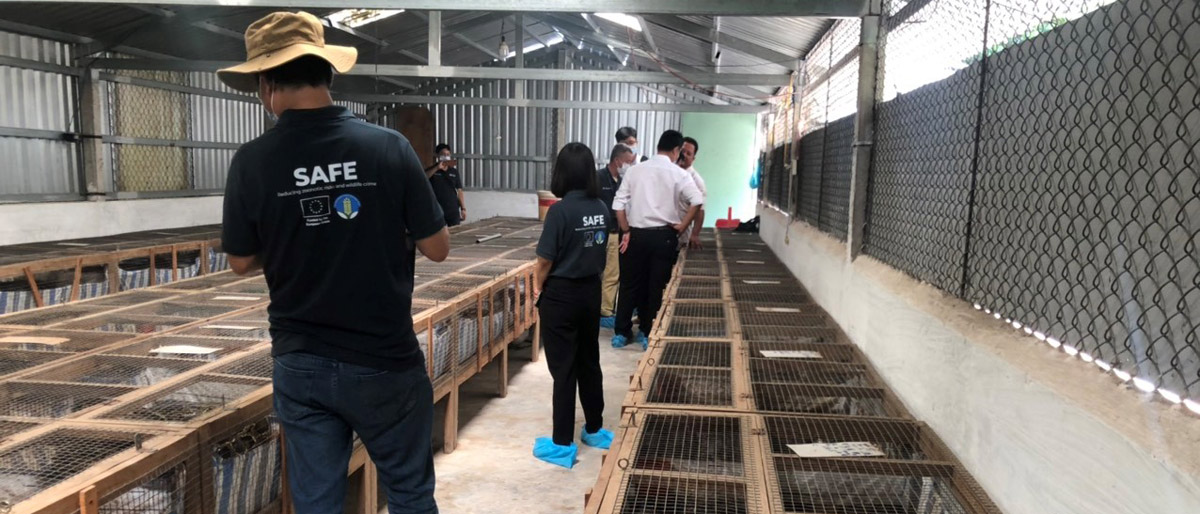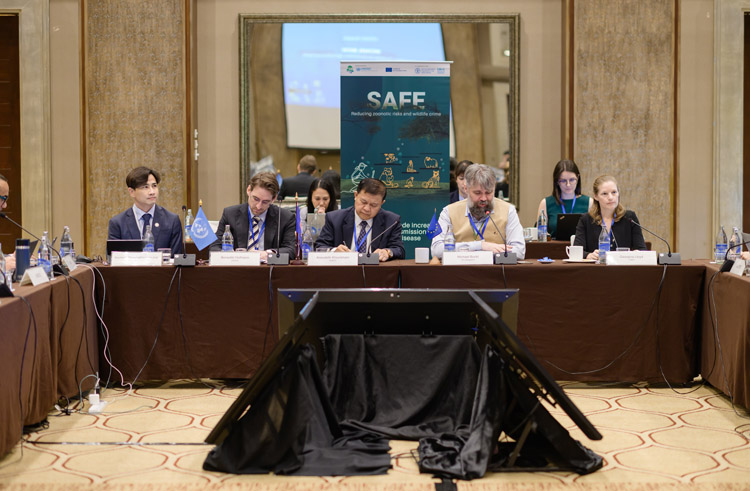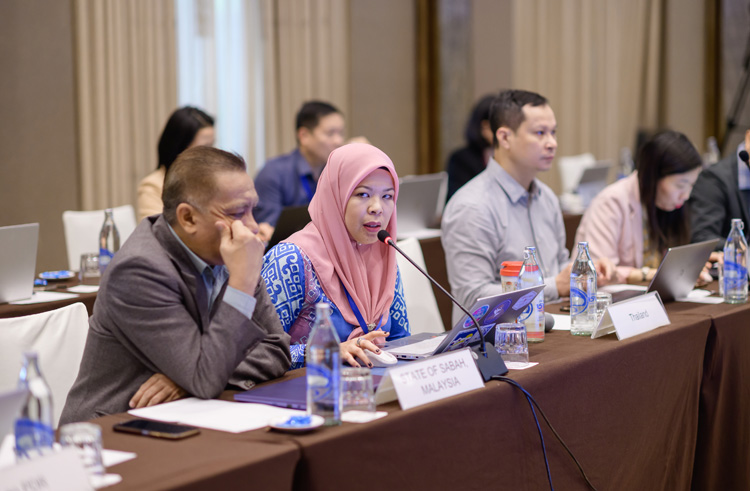Biosafety and biosecurity standards in captive wildlife facilities as a practical step to prevent zoonotic spillovers in Southeast Asia
06/12/2024

Members of the SAFE project team conduct an on-site evaluation of a turtle and python breeding facility in Can Tho province, Viet Nam.
©FAO/Nguyen Cuong
The COVID-19 pandemic showed the world how diseases that jump from animals to humans—zoonotic diseases—can tragically affect lives, health systems, and economies. Southeast Asia, known for its rich and diverse wildlife and cultural traditions, faces heightened risks of zoonotic disease spillovers. Recognizing these threats, FAO, in collaboration with the United Nations Office on Drugs and Crime (UNODC) and the UN Environment Programme (UNEP), organized a cross-regional dialogue and invited the relevant Association of Southeast Asian Nations (ASEAN) sectoral bodies and the European Union (EU) member countries as well as EU delegations in Bangkok in early December 2024. It aimed to strengthen cross-regional cooperation to improve biosafety and biosecurity in captive wildlife facilities in the region.
Wildlife captive facilities like zoos, breeding centers, and markets often need to be better regulated, with adequate hygiene and biosafety protocols. Additionally, when wildlife is traded illegally, it bypasses essential sanitary and biosecurity controls, further increasing the risk of disease transmission from animals to humans. These gaps can turn wildlife facilities into hotspots for disease transmission from animals to livestock and humans, potentially triggering future pandemics.The dialogue, conducted under the EU-funded Safety across Asia for the Global Environment (SAFE) project, implemented by UNODC in partnership with FAO and UNEP, leveraged risk assessments carried out in Thailand, Viet Nam, Lao People’s Democratic Republic and the State of Sabah in Malaysia. This initiative aimed at reducing the risks of the next pandemic and addressing illegal wildlife trade.
ASEAN is uniquely positioned to drive the development and adoption of regional standards, leveraging the ASEAN Leaders’ Declarations on One Health and Biosafety and Biosecurity. This Declaration and other ASEAN frameworks provide a baseline for translating commitments into enforceable measures. Mohd Shafarin, Interim Coordinating Officer of the ASEAN Coordinating Centre for Animal Health and Zoonoses (ACCAHZ), emphasized, “ASEAN’s role is not just to set guidelines but to formalize and standardize the protocols. This creates a joint framework that empowers Member States to act cohesively.”
Georgina Lloyd, UNEP’s Regional Coordinator for Environmental Law and Governance, stressed the need to uphold good environmental governance through effective legal frameworks and capable institutions, saying, “Environmental rule of law is as essential to preventing the next pandemic as are all other dimensions of biosafety and biosecurity.”
FAO underscored the risks zoonotic diseases pose to food systems. Diseases transmitted from wildlife to livestock can disrupt food supplies and harm farmers’ livelihoods. “Practical, risk-based biosafety and biosecurity protocols are essential to safeguard human and animal health while preserving regional livelihoods,” said Kachen Wongsathapornchai, FAO’s Regional Manager for the Emergency Centre for Transboundary Animal Diseases (ECTAD).
The SAFE project identified operational, legislative and regulatory gaps in managing wildlife facilities, including inadequate licensing systems, lack of veterinary oversight, and reliance on wild-sourced animals. Addressing these issues requires regional standards for biosecurity and biosafety, appropriate licensing, waste management, and disease monitoring.
 |  |
| Representatives from ASEAN and EU discussing biosafety and biosecurity standards in captive wildlife facilities in Bangkok, Thailand. © FAO | |
The dialogue between ASEAN and the EU is vital to the development and implementation of these measures. Initiatives such as FAO’s Progressive Management Pathway for Terrestrial Animal Biosecurity can provide tools to improve biosafety practices; in addition programmes such as the Sustainable Wildlife Management Programme could balance conservation and public health.
Training for wildlife facility operators, veterinarians, and policymakers is essential to ensure that biosafety measures are implemented effectively. Public awareness campaigns can also play a vital role in educating communities about the risks of unsafe wildlife trade and encouraging safer practices.
The dialogue concluded with a resounding call for ASEAN sectoral bodies to prioritize the formalization and enforcement of biosafety and biosecurity standards. As Benedikt Hofmann, UNODC’s Deputy Regional Representative, emphasized, “Wildlife crime and associated risks cannot be addressed by any country alone. This dialogue exemplifies how shared strategies and best practices can create synergies to manage high-risk wildlife facilities and prevent future pandemics.”
By collaborating on regional strategies, ASEAN and its partners are building a safer and healthier future. Strengthening biosafety and biosecurity in captive wildlife facilities is vital in protecting public health, ensuring food security, and supporting the livelihoods of farmers and communities across Southeast Asia.
Learn more:
- The SAFE project is implemented by the UNODC Global Programme on Crimes that Affect the Environment, in cooperation with FAO ECTAD and UNEP, and benefits from the financial support of the European Union. Click here to learn more about the SAFE project.
Contact
Rindu Putri
FAO ECTAD Regional Communications Specialist
[email protected]
